#queen marie sophie of the two sicilies
Explore tagged Tumblr posts
Text


Duchess Ludovika in Bavaria to her sister Archduchess Sophie of Austria, on the possible engagement of Archduke Karl Ludwig to Princess Maria Annunziata of Bourbon-Two Sicilies:
August 22, 1861 (...) My Marie [Queen of the Two Sicilies] wrote to me the other day that it was her husband [Francesco II]'s wish that his eldest sister [Maria Annunziata] could become your Karl [Ludwig]'s wife. Perhaps I should have expressed it in a much more fanciful way, but I didn't quite know how, so I fell through the door. I will now copy to you what Marie says of this sister-in-law: “Certainly Karl can find no better wife, and Aunt Sophie no better daughter-in-law. She is so shy and so learned, has such a noble, open character, such a lively spirit and so much resource, and at the same time such calm, gentle manners, just as I would wish for a wife for Gackel [Karl Theodor, Marie's brother] and a daughter-in-law for you; this must be proof for Aunt Sophie and Karl of how excellent the girl is. Although Petita [Princess Maria Immacolata, Annunziata's younger sister] is much prettier, everyone prefers Ciolla [Annunziata's nickname] because of her character, which is imprinted on her face, which is also pretty and has something so engaging and warm. I hope you will succeed in winning Aunt Sophie over to this idea; I would be indescribably happy, because I love the girl so much! I expect a good answer from you, with indescribable impatience”
Pictured: Princess Maria Annunziata and Archduke Karl Ludwig, by Oscar Kramer, circa 1862 (left). Queen Marie Sophie of the Two Sicilies, unknown, circa 1860 (right). Via ÖNB.
#matchmaker marie!#also this is from#sexau's pdf#queen marie sophie of the two sicilies#maria annunziata of bourbon-two sicilies archduchess of austria#archduke karl ludwig of austria#ludovika of bavaria duchess in bavaria#sophie of bavaria archduchess of austria
33 notes
·
View notes
Note
prettiest royal woman iyo?
Queen Alexandra

Empress Maria Feodorovna

Grand Duchess Tatiana Nikolaevna
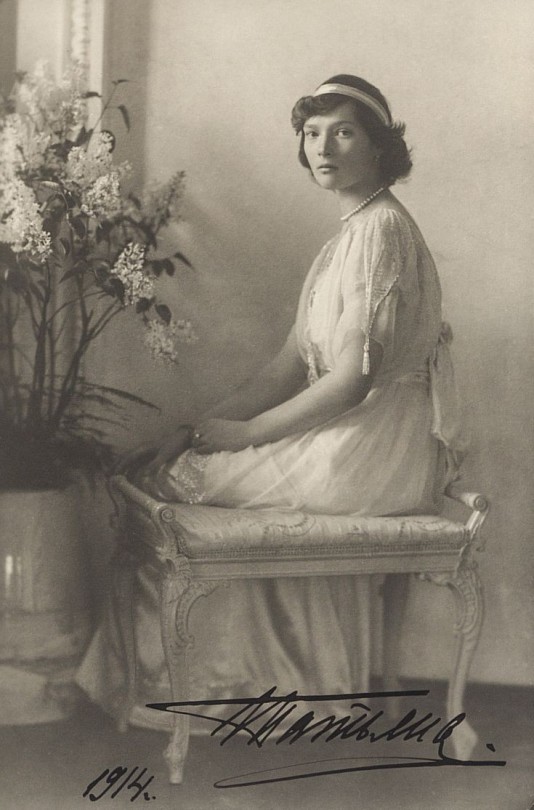
Empress Victoria of Germany
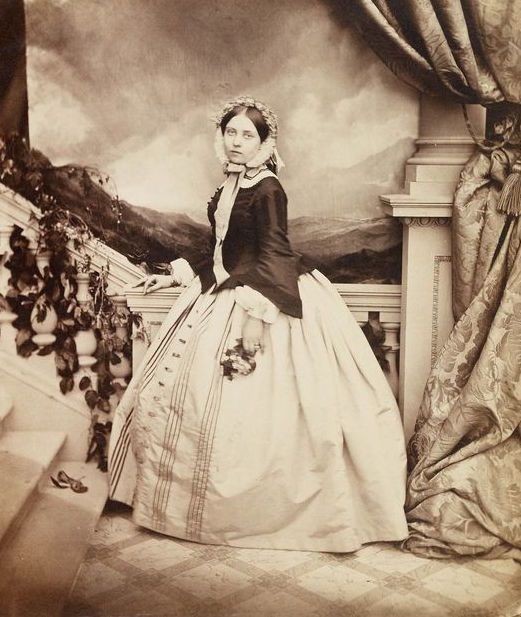
Queen Maud of Norway
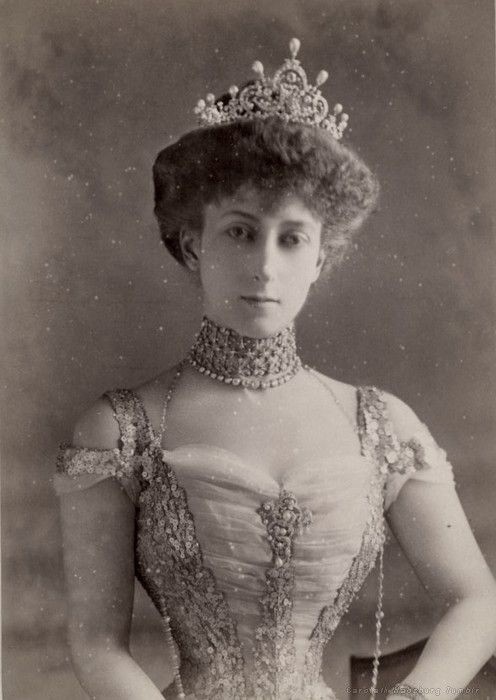
Grand Duchess Elisabeth Feodorovna
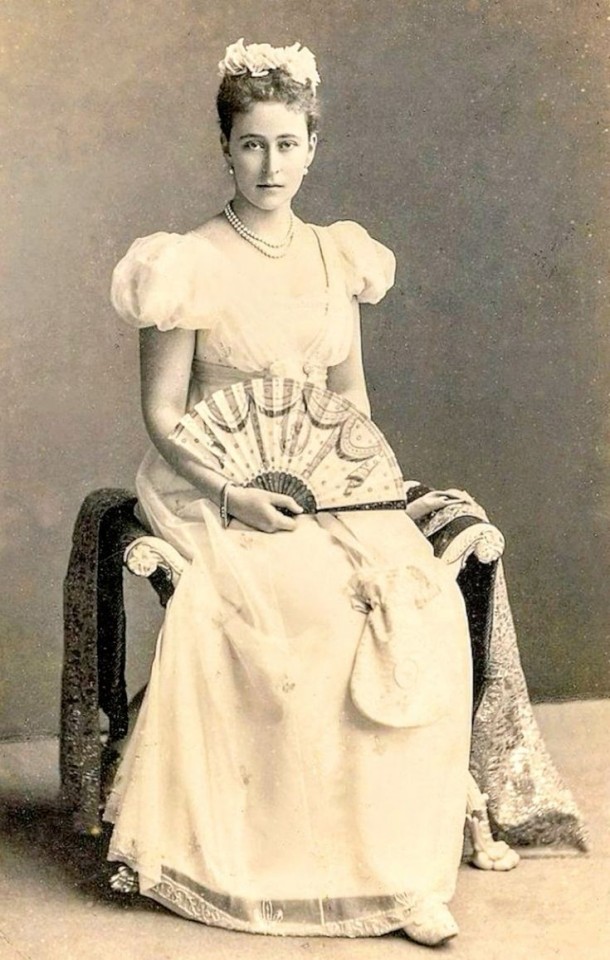
Queen Sophia of Greece
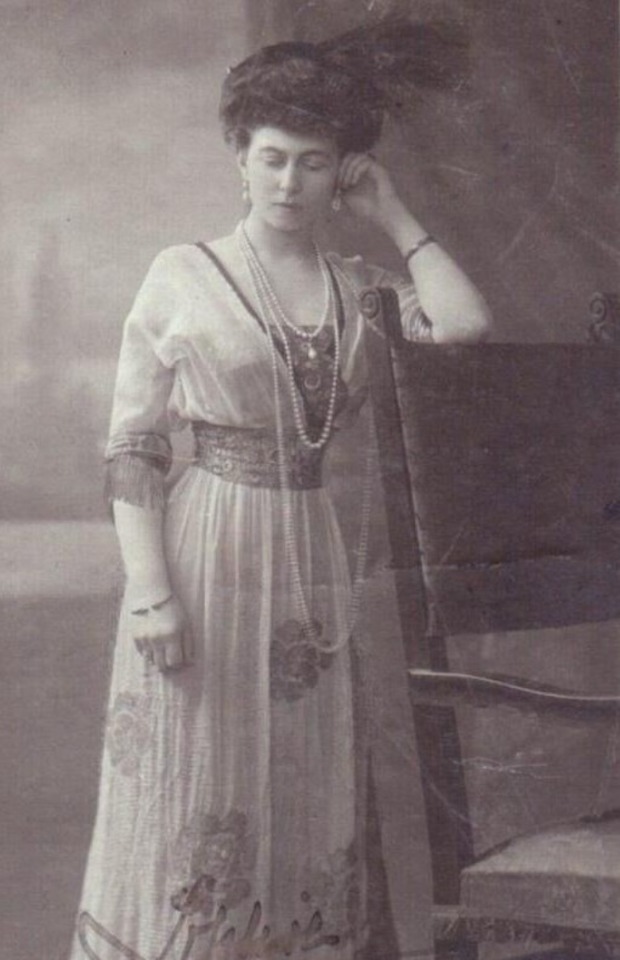
Queen Maria Sophie of the Two Siciles
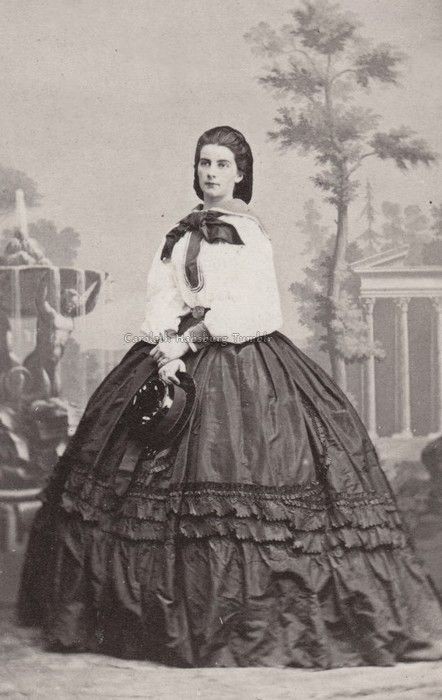
Princess Margaret
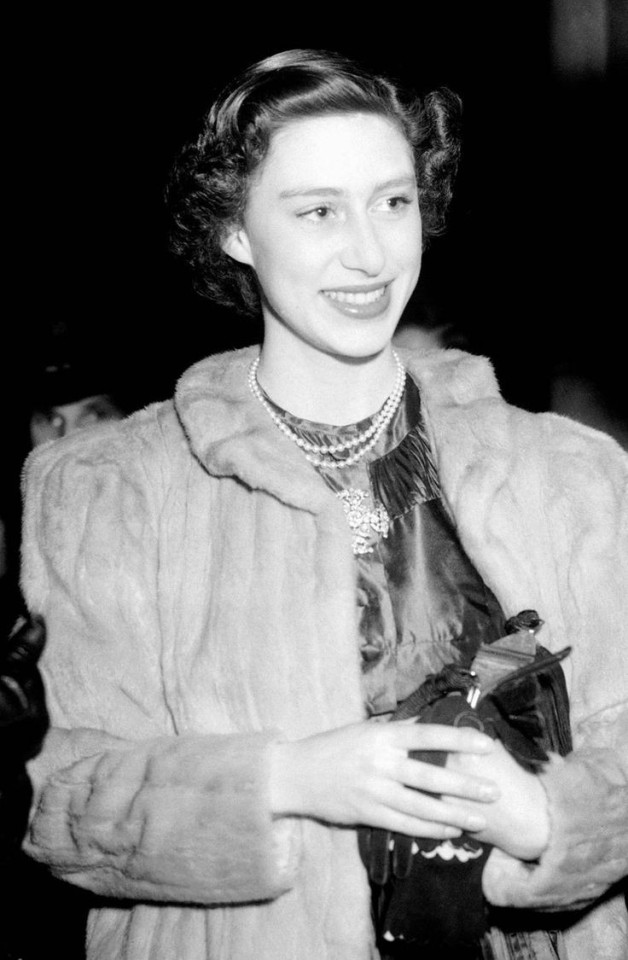
Princess Beatrice of Edinburgh, Duchess of Galliera.
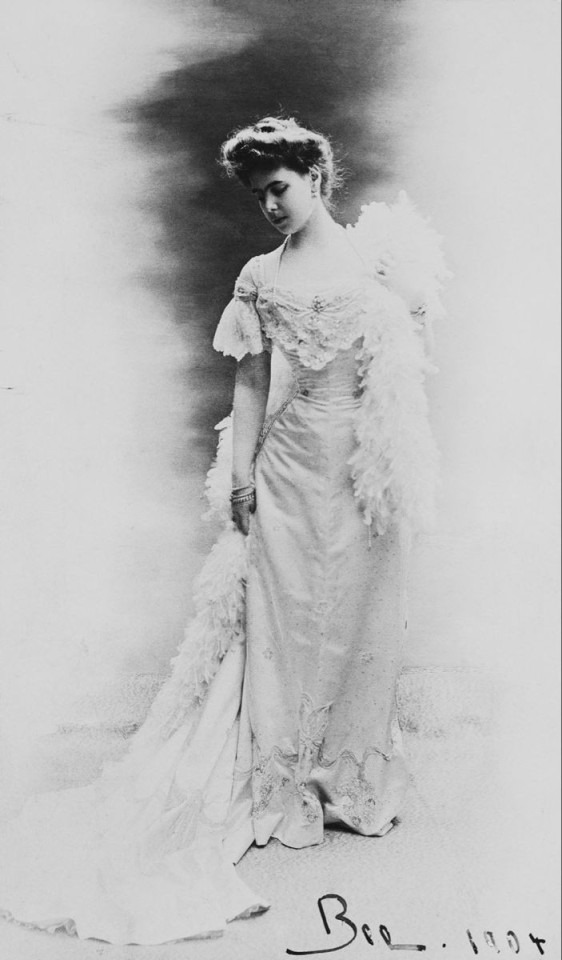
#answered ask#queen alexandra#alexandra of denmark#empress maria feodorovna#dagmar of denmark#grand duchess tatiana nikolaevna#victoria princess royal#empress victoria of germany#maud of wales#queen maud of norway#grand duchess elisabeth feodorovna#elisabeth of hesse#queen sophia of greece#princess sophia of prussia#queen marie sophie of the two sicilies#duchess marie sophie in bavaria#princess margaret#countess of snowdon#princess beatrice of edinburgh#duchess of galliera
17 notes
·
View notes
Photo
She was a true beauty! ❤🫀

Maria Sofia Queen of Naples
66 notes
·
View notes
Text
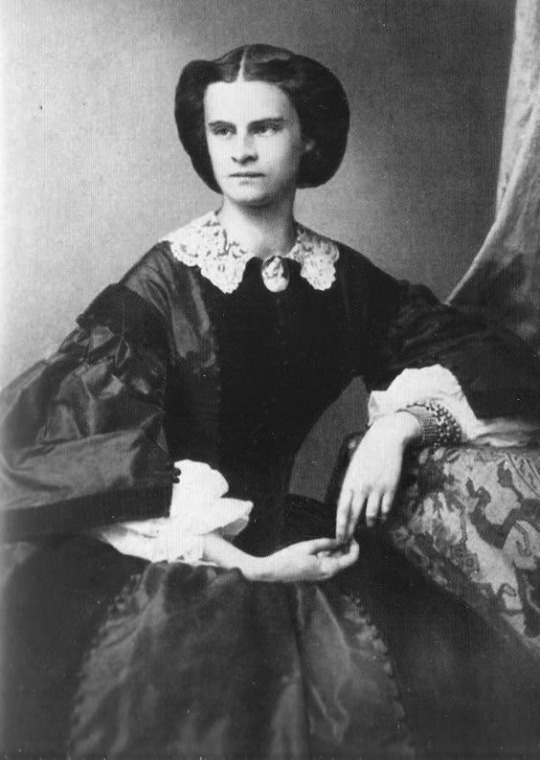
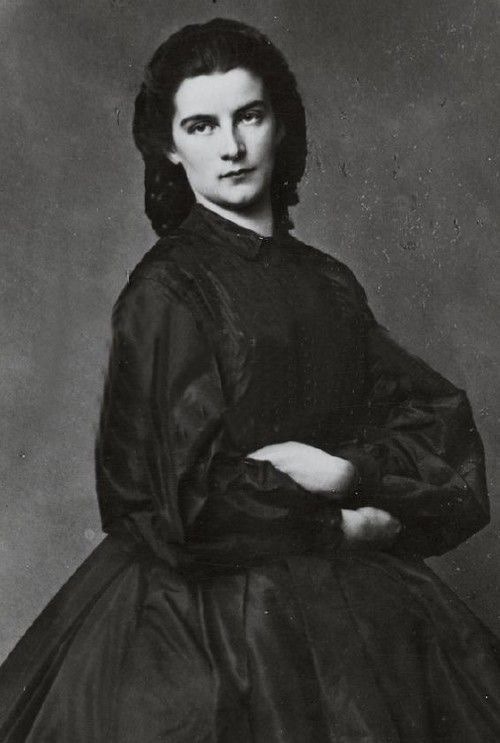
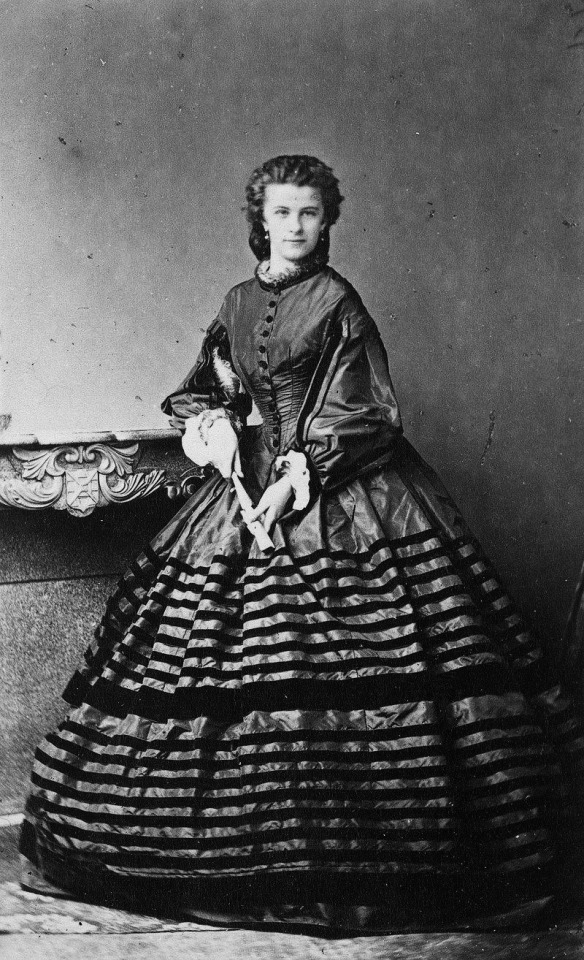
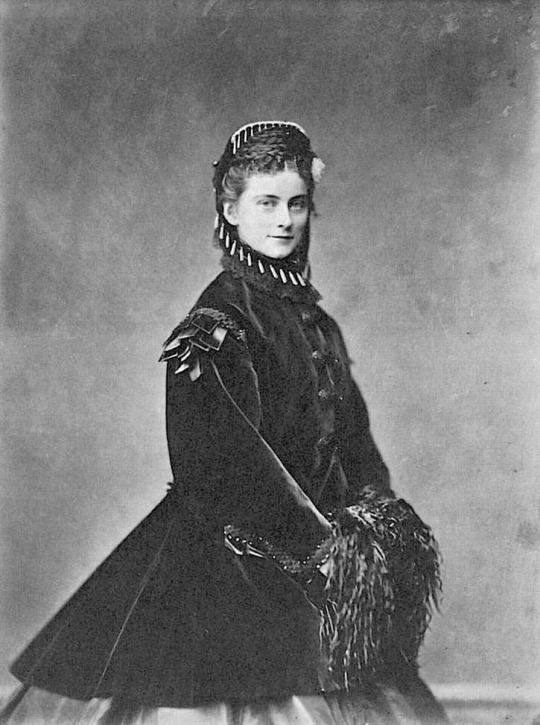
The four sisters of Elisabeth (left to right) :
Helene Caroline Therese, Duchess in Bavaria then Hereditary Princess of Thurn and Taxis. (1834-1890)
Marie Sophie Amélie, Duchess in Bavaria, Duchess of Calabre then Queen Consort of the Two-Sicilies. (1841-1925)
Mathilde Ludovika, Countess of Trani. (1843-1925)
Sophie Charlotte Auguste, Duchess in Bavaria then Duchess of Alençon. (1847-1897)
#Marie-Sophie in Bavaria#Helene in Bavaria#Mathilde in Bavaria#Sophie-Charlotte in Bavaria#old photographs#portraits#sisters#sisterhood
12 notes
·
View notes
Text

Queen Marie Sophie of Naples
4 notes
·
View notes
Text
😍😍😍

Queen Marie Sophie of The Two Sicilies, born Duchess in Bavaria. A carte de visite photograph by Fratelli D'Alessandri, Rome circa 1861. From my own collection.
22 notes
·
View notes
Photo


The sister of Empress Sissi,Marie Sophie,duchess in Bavaria,later Queen of the Two Sicilies.
27 notes
·
View notes
Text

OTMAA Contemporaries: Marie Louise of Orleans
Born in 1896, Marie Louise was of a similar age to Olga and Tatiana, who were her distant cousins through the Saxe-Coburg line; OTMAA were great-grandchildren of Queen Victoria, and Marie-Louise was the great-granddaughter of Queen Victoria's favorite uncle, Leopold I of Belgium.
Marie Louise's mother was Princess Henriette of Belgium, and her father was Prince Emmanuel of Orleans, Duke de Vendome. She had three younger siblings, Sophie (1898), Genevieve (1901), and Charles Philippe (1905).
She married Prince Philip of Bourbon-Two Sicilies in 1916 and had one son before divorcing in 1925. She remarried in 1928, to Walter F. Kingsland Jr., an American businessman.
18 notes
·
View notes
Text
Royal women plagued by scandals...
1. Sophia Dorothea of Celle.
2. Sophie of Anhalt-Zerbst
3. Princess Carolina Matilda of Great Britain.
4. Princess Caroline of Brunswick.
5. Princess Juliane of Saxe-Coburg-Saalfeld.
6. Marie Louise, Duchess of Parma.
7. Maria Christina of the Two Sicilies.
8. Queen Isabella II of Spain.
9. Princess Louise of Belgium.
10. Grand Duchess Anastasia Mikhailovna.
11. Duchess Elisabeth Alexandrine of Mecklenburg-Schwerin.
12. Archduchess Louise of Austria.
13. Princess Marie of Edinburgh.
14. Duchess Marie of Mecklenburg-Strelitz.
15. Princess Marie Adelheid of Lippe.
I have to read more about royalty...
14 notes
·
View notes
Text
“This story is truly historical, whatever may say the clerical and Bourbon newspapers”

It’s always a joy when I find the one book, the one journal article, that points to me where a story likely originated. So you can imagine how I felt whenI finally found the origin of a rumor I’ve been reading for years: that of Queen Marie Sophie of the Two Sicilies alleged affair in Rome.
But first, some necessary context. The Bourbons of the Two Sicilies had been deposed in February of 1861, after being under siege in Gaeta, the last bastion of their kingdom, for over three months. The royal family moved to Rome, where king Francesco II assembled a court in exile. His queen, the nineteen-years-old Marie Sophie in Bavaria, gained international stardom for staying in Gaeta during the siege, railing the troops and nursing the wounded. Her bravery earned her the nickname “the heroine of Gaeta” and she became the face of the cause of Bourbon restoration. It didn’t take long, however, until the press started to print stories that painted Marie in a less favorable light: the queen rode alone, smoke and shoot, and seemingly, there was a lot of tension between the royal family.
And then, over a year after the end of the siege, in July of 1862, Marie suddenly left Rome for Bavaria, officially because of health reasons. Yet it was widely speculated in newspapers that the real reason for the ex-queen’s departure was a complete fall out with her husband and her step-mother-in-law. Marie stayed in Munich until October, when she entered into an Ursuline convent in Augsburg, from which she only emerged in January of the next year.
Marie’s stay at the convent gave way to much public speculation. Most importantly, it is from this stay that came the rumor which has followed Marie to this day (and the one that concerns this post): that the real reason for her confinement was that she had become pregnant by her lover, a Belgian papal zouave, and gave birth to an illegitimate daughter.
The authorship of the rumor is often attributed to Marie’s niece, Countess Marie Larisch, as she went into all sorts of details about this alleged affair and illegitimate child in her books. I’ve known this to be false for years now, as you can find mentions of this story in works published years prior to Larisch’s memoirs (like the first biography ever written about Marie, published in 1904). So, if not Larisch, then who started this rumor? It turned out, the most obvious answer was the correct one all along: the rumor was started by pro-Risorgimento Italian newspapers.
I first came across this information in the book Les amours de Napoléon III - Tome II, published anonymously in 1864. The author of the book was Pierre Vésinier, a French journalist who was exiled after Napoleon’s coup d’etát. Unsurprising then that in the preface of the book Vésinier claims that “we will show all these upstarts [of the Second Empire] surpassing in their orgies all the villainous debauchery of the Regency, and all the bigoted lusts of the Parc-au-Cerf” (1864, p. 1).Having only read the part concerning Marie, I can vouch that at least that segment is so malicious it almost becomes funny.
Vésinier very much disliked empress Eugénie, but as “the character and the life of the Montijo” is already known by his readers (remember this is the second volume of his analysis of the morals of Napoleon’s court), he will judge an aspect of Marie’s character instead (ibid, p. 8). Why Marie? Well, Eugénie liked her, which meant there had to be something morally wrong with her, duh. He then proceeds to “translate the correspondence from Rome dated December 5, 1862, published by the newspaper L’Opinione” (ibid). Here is where I did a double take. December of 1862. Meaning, from the time Marie was at the convent! This rumor is as contemporary as it gets. And I was definitely not prepared to read the full version of it (disclaimer: originally these were only three parragraphs, but they were deemed too long and Tumblr didn’t let me publish the posts, therefore I had to divide them in shorter parragraphs):
Your readers may remember that about a year ago, a rumor was circulating that Maria Sophia, ex-Queen of Naples, had shot dead a young lady of her court, out of jealousy, some said; to ensure the secrecy of the intrigues, of which this young lady had unwittingly become aware, others said. The papal government, to stifle the dreadful scandal that had reached the Quirinal, always imposed a forced silence on the courtiers and opposed absolute official denials to the correspondence from Rome addressed to the various organs of the periodical press. However, a sentence of 25 years of hard labor, pronounced recently by the French court-martial against a captain of the papal Zouaves, has made the principal heroes of this bloody adventure known to the public. This officer of the Papal Zouaves had assumed the titles of a Belgian nobleman, his namesake, whose decorations he had usurped, and had succeeded, thanks to his good looks and his pretty manners, in becoming the secret lover of Marie-Sophie. But alas! the unfortunate man has just paid dearly for his good fortune, for he has been sentenced to twenty years of hard labor for the triple crime of forgery, seduction, and adultery; having been the cause of an assassination. I know the full importance of the accusation that I bring here against the ex-Queen of Naples, but I support it with all assurance, because the greater part of the circumstances that I am going to relate to you were proven in the trial of this assassin of the Holy Father, part of the proceedings of which came to the knowledge of the public, by means of secret confidences, which always end up being known, thanks to the indiscretion of the people to whom they are confided. Here are the facts as they happened.
The young Queen of Naples, Marie Sophie, wife of Francesco II, had one morning advised the daughter of General Statella, aged about 22 or 23, her maid of honor, not to enter her bedroom and not to let anyone in, because she was, she said, very tired. As she did not come to breakfast at the usual time, as was her custom, her entire family, who were waiting for her with the greatest impatience, showed the greatest concern for her. Also, her husband, even more worried than all the others, wanted to enter his wife’s room to ask how she was and the reason for the delay in coming to breakfast. It was in vain that Mademoiselle Statella communicated to him Marie Sophie’s express orders, which forbade everyone from entering her room, even the king; the latter, listening only to his impatience, absolutely wanted to force the order and enter his wife’s room. Mlle. Statella, seeing that it was impossible to make Francesco II change his mind, thinking moreover that the queen was in amiable and gallant company, and fearing a great misfortune and an enormous scandal, if the king entered, resolved to violate the order, to save her mistress. She rushed, herself, into the small apartments of Marie Sophie, to warn her of the king’s arrival, but the latter, who was lying with the amiable and kind Zouave, at the sight of her, flew into a great fury, she jumped down from the bed, still in her chemise, seized a dagger, and in her rage, she plunged it several times into the loins of her unfortunate maid of honor, who had fled in vain; the poor girl fell mortally wounded and bathed in her blood.
Marie Sophie rushed, like a fury, onto the corpse of her innocent victim, which she dragged to the foot of her bed, to which she set fire, in the hope of burying in the ruins of the burned palace, the proofs of her dreadful crime and her adulterous loves, and to make people believe that the death of her maid of honor was the result of the disaster that had devoured her apartments; but the fire was extinguished and the body of Mlle. Statella remained as a bloody testimony to Marie Sophie’s crime. It is still unknown today whether the seductive captain was arrested at the time the crime was committed, or whether, taking advantage of the alarm, the disorder and the general confusion, he managed to escape by a secret door or a hidden staircase, but whatever the case, he was placed under the hands of justice.
Since these scenes of violence, fire and murder, the deepest grief, the greatest despair, seized the members of the royal family, the desolation of the queen mother, the profound dejection into which Francesco II fell, the fits of convulsive rage of Marie Sophie are impossible to describe. For more than eight days, the latter did not dare leave the room in the palace to which she was relegated. But in the midst of all these uncertainties and all these anxieties, it was necessary to provide for the burial of the corpse of the unfortunate maid of honor, in order to bury in the tomb, the mystery of this tragic morning, and to ensure the secrecy of the loves and crimes of Marie Sophie.
A doctor was brought to the Quirinal with the greatest precautions, so that he would be willing to make a report stating that the young Statella had died the victim of an accident; but at the sight of the enormous wounds that he saw on the victim’s back, he refused to give the statement that was requested of him to proceed with the burial of the corpse, he did not want to take anything upon himself, without the presence of two agents of the high police; neither the tears of Marie Sophie, nor the prayers of the queen mother, nor the threats of the king moved him, he recommended that nothing be changed in the state of the place, he closed the doors and windows of the room, where the crime had been committed, and he soon returned accompanied by Monsignori Pertini, Pasqualoni and Severi, employees of the high police, it was then noted that Mlle. Statella, only had burned feet and that she was sweating from the stab wounds she had received from behind. Since that fatal day the discord was always increasing in the royal family, the young queen of Naples rightly fearing the disclosure of the infamies, with which she had covered herself, left Rome clandestinely to go and shut herself up in a convent, in Augsburg, but it seems that the cloister, far from calming her violent passions and tempering her indomitable character, excited them even more and she frequently gave herself over to fits of extreme violence or isteric fury, which approached mental alienation, she rolled convulsively on the damp flagstones of her cell, uttering frightening imprecations against her husband and calling with all her wishes for the happy Zouave, who made such a deep impression on her depraved senses.
It is in vain that Pius IX tried and still tries today to restore good harmony between the two august dethroned spouses, he has not yet been able to succeed; this pusillanimous old man has the greatest fear of seeing the bloody drama become public, of which the walls of the Quirinal were the silent witnesses lately. He fears the publicity of all these horrors worthy of Julius II, Alexander VI, Borgia and the long line of monsters, who have donned the Roman purple or Lucrezia Borgia, Pope Joan and Joanna of Naples, of erotic and bloody memory. But the truth demands its rights, inexorable justice awaits the guilty, and despite the cunning precautions, the threats and the anger of the Vatican, the masks must fall, the great day of publicity must reach the perpetrators of these crimes and reveal naked the face and the heart of a certain heroine for whom the wife of Louis Bonaparte professes such profound sympathy, and to whom they have sought to give a chivalrous character. General Statella, father of the victim, who had been given 50,000 Roman écus, under the pretext of compensation, but in reality to buy his silence, died shortly after his unfortunate daughter, no doubt to ensure more certain impunity for the guilty parties who feared her revelations; who knows how many other innocent victims have already been sacrificed to bury the crimes of Marie Sophie in secrecy? But since then, as we have said, the trial of the papal Zouave has brought to light for all the virtues of the august wife of the unfortunate Francesco II. (ibid, p. 8-13)
I think my first reaction to this was “hm what?”.
The article is so smearing that you just can’t take it seriously at all, yet at least a part of it was, because to this day you read about Marie’s “zouave lover”. Sadly I wasn’t able to find the original article Vésinier is quoting (as only a handful of numbers of L’Opinione can be found digitalized in the Internet Archive, and I couldn’t find another digitalization anywhere else), so I can’t confirm how accurately he translated it. But now that I knew what to look for, I could narrow my search.
This led me to find two other Italian newspaper articles regarding the subject. The articles pretty much say the same as the one quoted above with less details, so I won’t translate them, but I’ll link them in case you want to check them out. The first is one from the edition of December 10 of Il Pepe Buono (which claims the letter from Rome is from 3rd, not the 5th), and the second from the edition of December 17 of Lo Cuorpo de Napoles e lo sebetto. I’m sure that if I keep looking I’ll find more, but these confirmed to me that Vésinier was not making up his claims but indeed quoting an Italian newspaper article from 1862.
Now let’s talk about the content of the article itself. The most serious accusation is, with no doubt, the murder of the lady-in-waiting. This is also the least believable accusation, as such a thing would’ve been known — you can’t sweep the murder of a noble lady under the carpet. Not only that, but also the story as told here doesn’t make much sense — so the Statella girl rushed to warn Marie that Francesco was going to her chamber, but apparently the queen still had time to stab her to death, drag her body, and set it on fire before he reached her room? The Quirinal Palace is big but the timeline still sounds ludicrous.
As for the people mentioned in the article: the general was Count Giuseppe Statella, who participated in the defense of the Siege of Gaeta and accompanied the royal family to exile in Rome, where he acted as the king’s master of the court. His wife Laura was first lady-in-waiting of the Dowager Queen Maria Theresa and later of Mathilde, Countess of Trani; his wife’s sister, Maria Francesca, Duchess of San Cesario, was the head lady-in-waiting of Queen Marie Sophie. The Statellas therefore were closely connected to the Bourbons. Count Statella indeed died in 1862, but I couldn’t find much details about it.

Count Giuseppe Statella (middle), his wife Countess Maria Laura (left) and her sister Maria Francesca, Duchess of San Cesario (right). Credits to Nobili Napolitani.
It didn’t take long until a response to l’Opinione appeared in a Bourbon-friendly newspaper. In the edition of December 20 of 1862, the clerical journal Correspondance de Rome, printed in French, published an article denouncing the accusations. I will translate it fully so you can compare how the story was presented here, so forgive me for the repetition:
Slander A journal which was [owned] by M. de Cavour and which is keen to remain worthy of this great man, L’Opinione, inserted in its December 11 number a letter from Rome bearing the date from the 5th. We have too much respect for our readers, for ourselves and also for the French language, to translate this letter with all its repulsive details of cynicism and cowardice. We summarize; the semi-official organ of Turin begins by preparing its public:
“The desire to have news that would make disappear certain gaps in the bloody story that I am going to report to you”, he said, “made me wait until today to write to you… I can guarantee, above all, that this story is truly historical, whatever may say the clerical and Bourbon newspapers which will not fail to cry slander”
Then comes the story:
“A year ago, a quiet rumor circulated in Rome about a young lady of the Court of Bourbon, whom Marie-Sophie had killed with a pistol shot. Today, a judgment of the French military tribunal, pronounced last week, and which condemned to 25 years of forced labor a captain of pontifical Zouaves, has brought before the public the principal heroes of this bloody adventure...”
One can guess what the perversity of l’Opinione will do with this captain. She locks him in the queen’s boudoir, with the queen, and places a maid of honor as sentry at the door. Lunch has been served for a long time. The king grows impatient, he arrives. The maid rushes into the boudoir... and the queen, in a burst of fury, plunges a stiletto into her back. “The young person truly killed by the queen”, says l'Opinione melancholically, “is the daughter of General Statella; she was 22 or 23 years old.” The Zouave takes advantage of the confusion and escapes. The queen thinks of burning the victim. A doctor is called who requests the assistance of the papal police. The latter rushes and draws up the report. The royal couple are forever divided in sentiment. The queen leaves and goes to hide her remorse in the convent of Augsburg. The Pope offers his good offices and wants to restore peace. “Last week, Pius IX had a three-hour meeting with the Bourbon family; for he is greatly afraid that the light of publicity will come to illuminate these bloody scenes that occurred at the Quirinal. But the truth demands its rights, the masks must fall...”
Such is the story, such is the conclusion of the journal of the late M. de Cavour.
Well, in the name of the right to truth, we tear off the masks of the scribes of l’Opinione, of the Monitore Toscano, of the Corriere delle Marche and of the other papers that copy this odious version or give variations of it, and we say to them:
You have lied, you have slandered in the most cruel and most cowardly way. You are reviving the infamous trials of the san-culottes of the 93 against the queen Marie Antoinette. You are the heirs of these monsters with a human face. There is not a man of heart who does not reject you with disgust. Gorged with the spoils of a family allied by blood and treaties to your own king, you insult dignity, virtue, misfortune and impotent glory. But you are as clumsy as your master in deceit, because the very foundations of your story are manifestly false.
Your main hero did not exist, and we can state that no Zouave or officer of the Papal Zouaves was ever tried by any French tribunal or court martial. The French military authorities categorically deny —as we know— your odious slander.
As for the young person, here is what Madame the Countess Statella kindly wrote to us the day before yesterday:
“Sir, the newspapers devoted to the unjustly called cause of Italy published a story full of insults against the queen Marie Sophie and had one of my daughters murdered in the Quirinal. All my daughters live, thank God, to declare with me that this story is in every way false and slanderous. Her Majesty, may God preserve her, is, as a woman and as a queen, worthy of her august husband and the blackness of the enemies of this heroic and unfortunate couple only gives more brilliance to their virtues and their undeserved misfortunes. Receive, I pray you, etc.
Countess Statella Berio.”
In regards to the queen Marie Sophie, although the purity of her life and the elevation of her character cannot be affected, we pray that the new calumnies of the revolution will not increase the ailments for which she seeks solace in solitude. The Piedmontese journalists fear that the first wounds they have inflicted will not heal, and they seek to throw their poisoned arrows over the walls of the Augustinian convent of Augsburg. They feel safe: the heroine of Gaeta, no more than the outraged woman, will not pursue them for calumny before tribunals that condemn only innocence and fidelity. But there is a supreme judge before whom they will one day appear to give an account of the tears they have caused to be shed and the blood they have caused to be spilt.
The king has suffered, he still suffers. History teaches him that rarely a young sovereign has been more exposed to betrayal, slander, and adversity; but his soul is warmed, his spirit rises in the combat. Francesco II knows, moreover, that he has on his side the legitimate protector of justice and law, the supernatural influence of his holy mother, and the love of his people. He can wait for events to unfold.
This article is also very biased — although in favor of the royal family this time. It is really interesting that Countess Satella herself (if we trust the Correspondance at least) denied the rumor, and while it probably did put an end to the murder accusation, it wasn’t enough to quell the infidelity rumors. And again, it’s really a pity that I can’t find the original L’Opinione article, because this counter-article claims the news was published on December 11, while the article on Il Pepe Buono was published on December 10. So they either got the date wrong, or Il Pepe Buono was the first journal to actually break the story.
Writing this post, I felt that I came across something that is beyond my scope: here there is a fascinating case about the role of the press in propaganda, Italian nationalism, rumors, gender and sexuality. The rumor, in all its ludicrousness, had the goal of smearing the reputation of the member of the royal family with the best image abroad: queen Marie Sophie. The “heroine of Gaeta” was the best propaganda the Bourbons had, and therefore the most clear target for attack. L’Opinione is quite graphic, describing Marie in her undergarments in bed with a man that wasn’t her husband. And not any man: a Papal zouave. This story makes the queen an adulterous murderer and the Papal army morally corrupt. The layers are fascinating — especially if we consider that, slander aside, Marie at the time was indeed acting in a way that was considered improper, leaving her husband for months. But pitifully, I don't know enough, nor do I have the resources, to tackle the subject any further than this.
Before finishing this post, there was still one missing piece of information that bothered me: who were Statella’s daughters? Because Geneanet only lists one son to the marriage, and other genealogy websites showed no sons or daughters. One more time, I searched for information about the Statellas, and managed to find one daughter: Filomena, Duchess of Castellaneta. One of her obituaries states she died on August 11 of 1879, and according to another obituary (which explicitly said that her parents were Count Giuseppe Statella and Laura Berio — that’s how I identified her), she had been “stolen from us so prematurely, at the still green age of forty-two, after painful pregnancy and a painful birth, due to uncontrollable bronchitis, as they say!” (1879, Roma Antologia Illustrata). If she was 42 at the time of her death, then in 1862 she must have been around 25. Was she meant to be the daughter murdered in the story? We can’t know. But I did find something else regarding Filomena. She appears in the Annuario della nobiltà italiana, published in 1878, in the section dedicated to her husband’s family. According to the annuary, the only daughter of the marriage, born in 1870, was named Maria-Sofia.

Sources:
Annuario della nobiltà italiana, 1878
Anonymous [Pierre Vésinier] (1864). Les amours de Napoléon III. par l'auteur de La femme de César. Tome II
Correspondance de Rome, December 20 of 1862
La civilttá cattolica, Vol. XII della serie decima
Roma Antologia Illustrata, August 21 of 1879
#i think this is one of my worst cited posts rip apa jgjgkgl sorry i had this on my drafts for moooonths#and i've been trying to finally finish it for the past three days#queen marie sophie of the two sicilies#francesco ii of the two sicilies#count giuseppe statella#laura berio countess statella#filomena statella duchess of castellaneta#pierre vésinier#correspondance de rome#l'opinione
9 notes
·
View notes
Note
Hello😁 can you share your favorite queens?
Thank you for the great ask anon, of course! 🥰
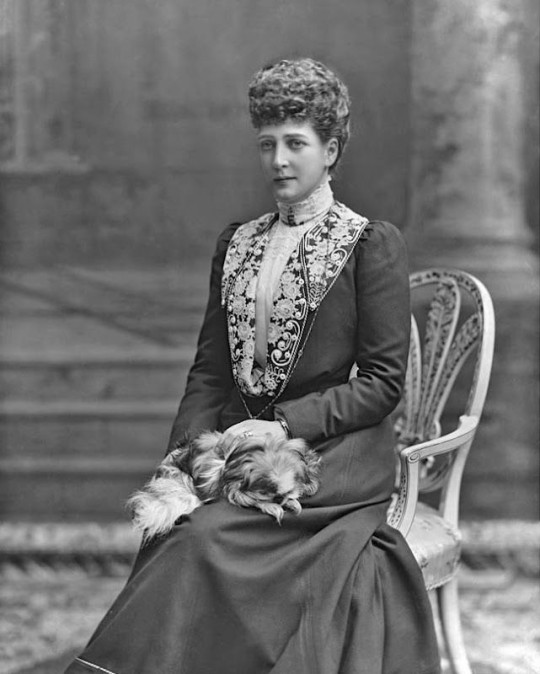
#1: Queen Alexandra of the United Kingdom – (nèe Princess Alexandra of Denmark, "Alix".
— She was beautiful, a warm and caring mother/grandmother, was popular as Princess of Wales and Queen Consort among of her people because of her good nature, and she supported many charities, including her own: "Alexandra Rose Day", founded by Queen Alexandra in 1912, this was a charity where flowers were being sold and all the money went to supporting Londoners in poverty. This was inspired by a priest in her native Denmark selling roses to raise money for those in need, Queen Alexandra brought the idea back to the United Kingdom. ❤✨

#2: Queen Anne Boleyn of England – (nèe Lady Anne Boleyn)
— She was intelligent, funny, caring and kind to all of people, and as her two years as Queen Consort she supported many charities, and even "gave alms to the poor, provided for widows, and even sewed shirts and smocks for the needy". She also helped with promoting new educational identities for monasteries, which were no longer under the protection of the Catholic Church. After only two years of being Queen Consort when she was said to have been 35 years old, she was executed after being imprisoned in the Tower of London for 17 days because she was accused of committing treason, but the true reason she was executed was because she failed to give King Henry VIII a male heir. ☹️💔
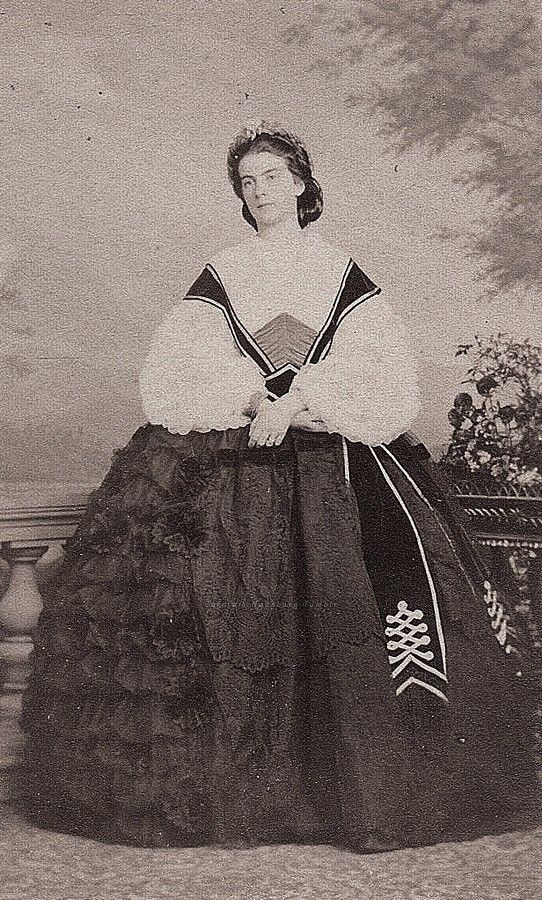
#3: Queen Marie Sophie of the Two Sicilies – (nèe Duchess Marie Sophie in Bavaria)
— She was beautiful, bright, and fierce. She was given the nickname the "Warrior Queen", the "Heroine of Gaeta" and the "modern Joan of Arc", rallying the troops, nursing the injured, feeding her forces at her own table and taunting Garibaldi's army from the battlements with the words; "Go ahead and shoot me. I will be where my men are". It was said of her that the Queen would "wipe your brow if you were wounded or hold you in her arms while you die". ❤️🔥👑
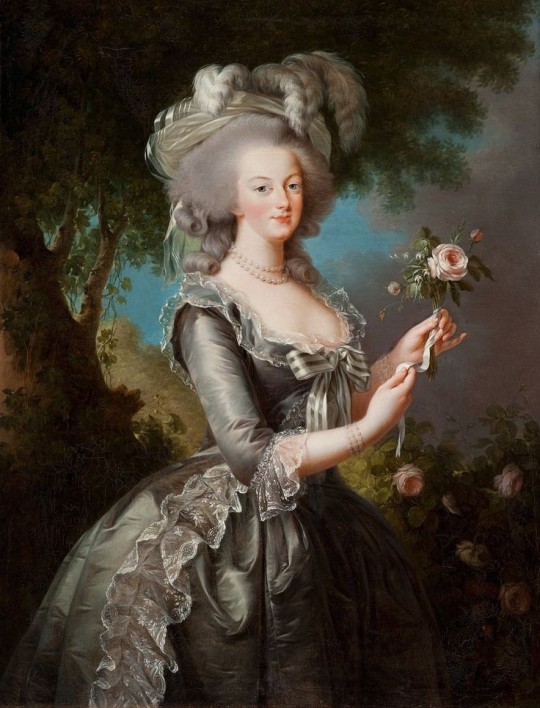
#4: Queen Marie Antoinette of France – (nèe Archduchess Marie Antoinette of Austria)
— She was honest, lovable, bold, a social butterfly who loved gambling, partying and extravagant fashions. Growing up she was closest with her sister, Maria Carolina, who was three years older, and with whom she had a lifelong close relationship. As Queen, Marie Antoinette was always unpopular, she spent lavishly, but her extravagance was only a minor cause of France's growing debt in the 1770-80s. Because of Louis XVI's indecisiveness, Marie played an increasingly prominent political role. But was very beloved for her charitable activities and patronage of the arts. She supported various charitable organizations and institutions, and she was also a benefactress of the poor. 💞🎀
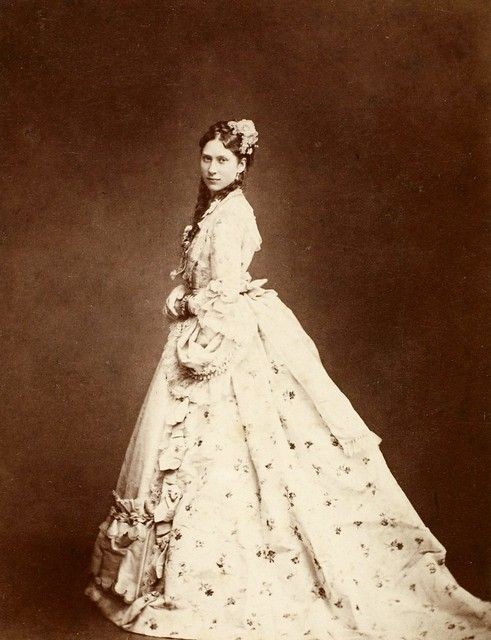
#5: Queen Lovisa of Denmark – (nèe Lovisa of Sweden)
— She was described as intelligent, with an ability to be natural, easy and friendly. And As Queen, she was mainly known for her many charity projects, an interest that she shared with her spouse. She did not care for ceremonial duties and public events, and lived a discreet life dedicated to her children and her interests in art, literature and charity. After a short tenure of only six years as Queen, she was widowed in 1912.
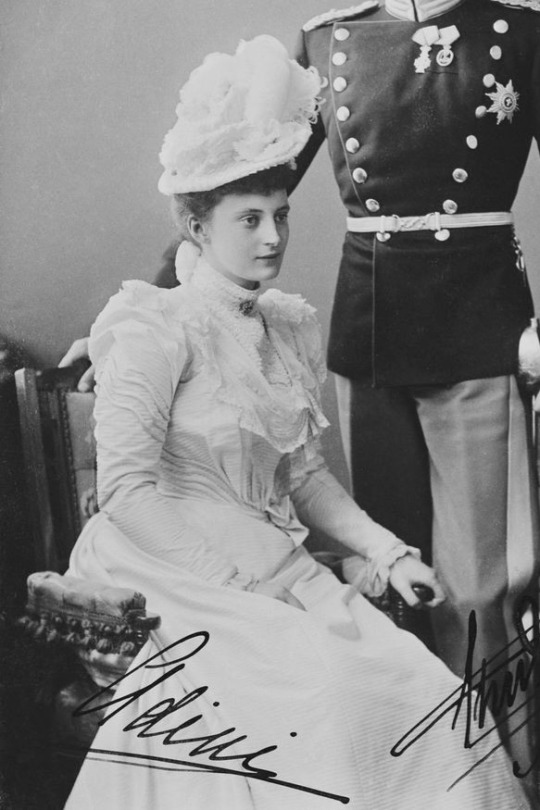
#6: Queen Alexandrine of Denmark – (nèe Alexandrine of Mecklenburg-Schwerin)
— She was reticent by nature. Her childhood was characterised by regular sporting activities, and from a young age she played the piano to a high standard. Her great interest in music stayed with her for her entire life and was passed on to her equally musical eldest son, Prince Frederik (IX). As of her first years as Queen, she had difficulty getting used to public attention, and she preferred to avoid the media limelight, but performed her functions in an exemplary manner. In the home her presence was crucial for the two boys, since Christian X was known for surrounding himself with a certain atmosphere of the barracks. Queen Alexandrine undertook extensive charity work until her death and was an avid golf player and photographer, who also loved doing needlework to a high standard. 💫
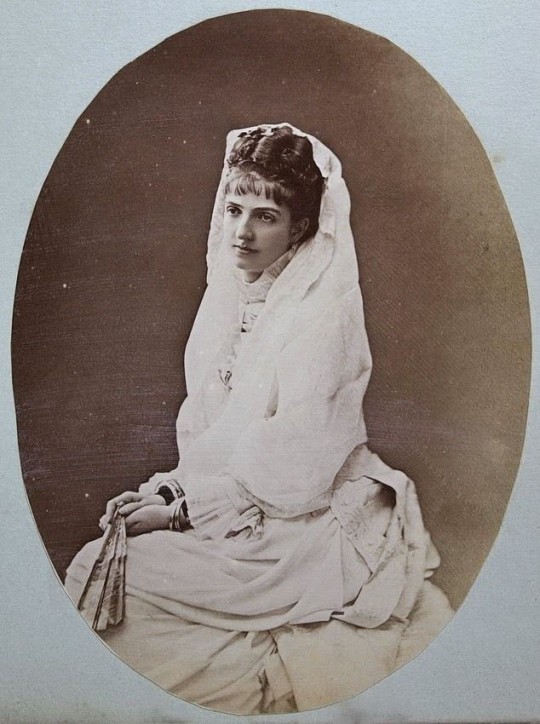
#7: Queen Margherita of Italy – (nèe Margherita of Savoy)
— She was described as sensitive, proud and with a strong force of will without being hard, as well as having the ability to be charming when she chose to. As to her appearance, she was described as a tall, stately blonde, but she was not regarded as a beauty. As Queen, she worked to protect the monarchy against republicans and socialists, and she gathered a circle of conservative intellectuals and artists known as the "Circolo della Regina" (Circle of the Queen) in her famous literary salon known as "Giovedì Della Regina" (Queen's Thursdays), where she benefited artists and writers.
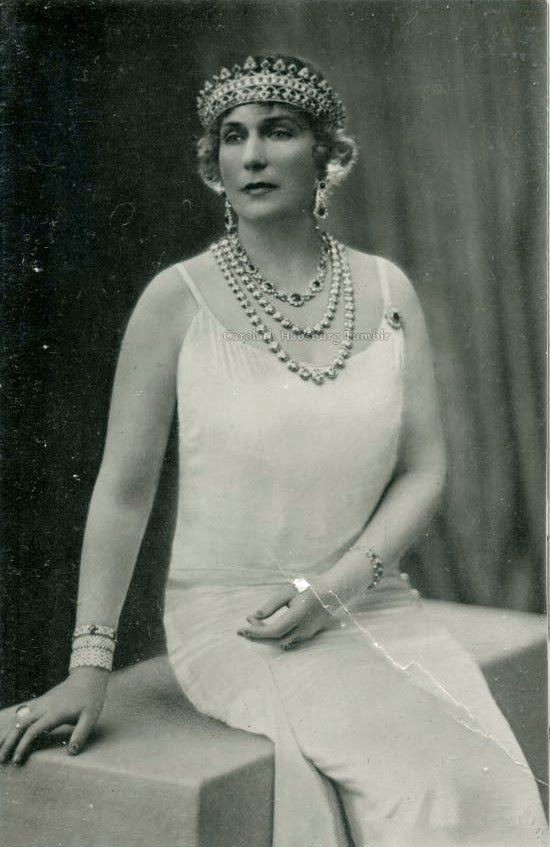
#8: Queen Victoria Eugenie of Spain – (nèe Princess Victoria Eugenie of Battenberg), "Ena".
— She was described as very kind but very strict and she devoted herself to work for hospitals and services for the poor, as well as to education. She also involved herself in the reorganization of the Spanish Red Cross. In 1929, the city of Barcelona erected a statue of her in a nurse's uniform in honour of her Red Cross work and since the the statue has been destroyed.
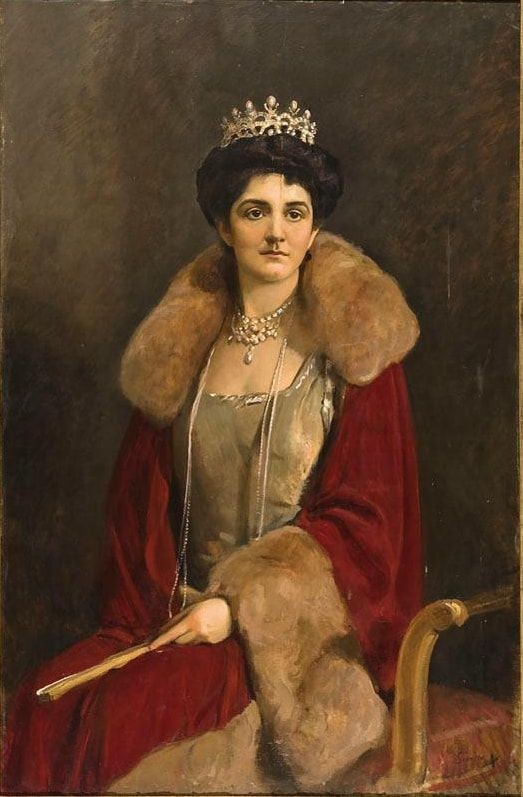
#9: Queen Elena of Italy – (nèe Elena of Montenegro)
— She was described as shy and reserved but also rather stubborn. Very attached to traditions, with a sensitive soul and a lively and curious mind, she was endowed with a strong love for nature: her favourite flower was the Cyclamen. She was a very tall woman of 180 cm (5'11). As Queen, her commitment to numerous charitable and welfare initiatives, which assured her great sympathy and popularity, was profuse. The Queen went well beyond mere charity: her evangelical spirit led her to practice every day the most genuine and most charitable love of neighbor.
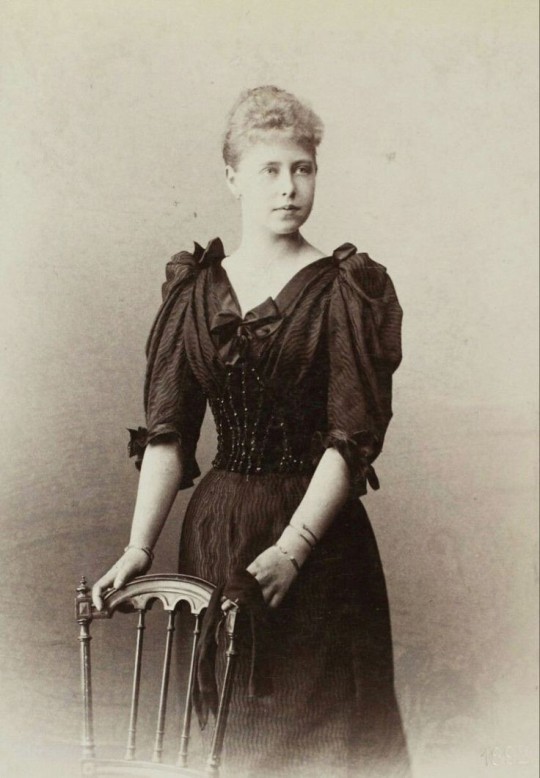
#10: Queen Marie of Romania – (nèe Princess Marie of Edinburgh), "Missy".
— She was described as very beautiful and high spirited. As a young girl, Marie was very close with her sisters, but mostly her sister Victoria Melita, they played many games with their father and Marie's mother, the Duchess of Edinburgh neglected Marie and her sisters' education, considering them not very bright or gifted. But in the fields of painting and drawing, Marie and her sisters had inherited her grandmother, Queen Victoria's talent. On October 11th, 1914, Marie and her husband Ferdinand were acclaimed as king and Queen in the Chamber of Deputies. Princess Anne Marie Callimachi, a close friend of Marie, wrote that "as Crown Princess, she had been popular; as Queen, she was more loved". Marie maintained a certain influence on her husband and the entire court, leading historian A. L. Easterman to write that "it was not Ferdinand, but Marie who ruled in Romania".
#answered ask#queen alexandra#alexandra of denmark#anne boleyn#queen marie sophie of the two sicilies#duchess marie sophie in bavaria#marie antoinette#queen lovisa of denmark#lovisa of sweden#queen alexandrine of denmark#alexandrine of mecklenburg-schwerin#queen margherita of italy#margherita of savoy#queen victoria eugenie of spain#princess victoria eugenie of battenberg#queen elena of italy#elena of montenegro#queen marie of romania#princess marie of edinburgh#informational
18 notes
·
View notes
Photo









Royal Birthdays for today, June 26th:
Anne Catherine of Brandenburg, Queen of Denmark and Norway, 1575
Hedvig Sophia of Sweden, Duchess of Holstein-Gottorp, 1681
Victor Amadeus III, King of Sardinia, 1726
Maria Nikolaevna, Russian Grand Duchess, 1899
Sophie of Greece and Denmark, Princess of Hanover, 1914
George Windsor, Earl of St. Andrews, 1962 Marie-Astrid of Liechtenstein, Countess of Rietberg, 1987 Jaime of Bourbon-Two Sicilies, Duke of Noto, 1993
Alexia of the Netherlands, Princess of Orange-Nassau, 2005
#Anne Catherine of Brandenburg#princess alexia#maria nikolaevna#Hedvig Sophia of Sweden#sophie of greece and denmark#George Windsor#Victor Amadeus III#Marie-Astrid of Liechtenstein#Jaime of Bourbon-Two Sicilies#royal birthdays#long live the queue
32 notes
·
View notes
Text
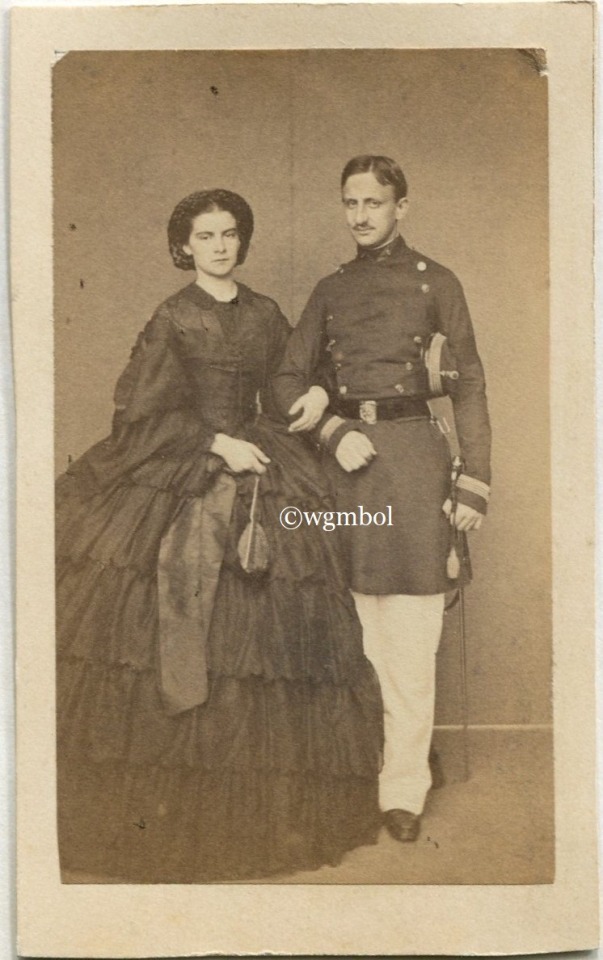
Francis II and Marie Sophie, last King and Queen of The Two Sicilies. A carte de visite photograph by Alphonse Bernoud, Naples 1959. From my own collection.
Queen Marie Sophie of The Two Sicilies in 1924.
I found this interview with Marie Sophie online, it's in Italian so I google translated it. Far from perfect!! But it gives some interesting info on our Queen one year before her death.
Posted by Giuseppe Grifeo on 19 February 2022, grifoneartigliopenna.com.
Interview with Her Majesty Queen Maria Sofia
Published in Corriere della Sera in November 1924.
by Giovanni Ansaldo.
Maria Sophia of Bavaria, Queen of Naples, widow of His Majesty King Francis II of Bourbon. Not only does she still live, but she reigns. Duchess of Castro for the vulgar of hotel maîtres and bellboys, empress of the soul for me.
I love the beauty and dignity of tragedy in her.
There will always be kings, they will triumph over theories and revolutions, because tragedy is necessary, and they alone are its characters.
Poor men need living beings, freed by birth from the miseries of sentimental promiscuity and from certain conventions towards equality, from certain leveling of pain, from certain ménagements of respectability.
A few days ago, Queen Maria Sophia was rummaging through some old crates, which had not been opened for years.
She drew out two poor water-colours, two views of Vesuvius, sweetly veiled by a languor of exile, which had trembled in the hand of the amateur. Her trusty Barcelona, who was next to her, found them beautiful.
"Do you think so?" replied the queen, squinting her eyes and looking at the two watercolors in perspective. "Do you think so? My king painted them."
And she laughed.
The old queen of eighty-three years still laughs, softly or with a sharp convulsion, and a wave of blood still rises youthfully from her heart to her temples, to the root of her white hair; she still laughs today as in his father's house in Possenhofen, in the palace of Naples, in the casemates of Gaeta, at the time of her eighteenth birthday.
The great disdainful are inclined to laughter: it is, in them, an attitude of defense against life. Unlike her sister Elisabeth of Austria, Maria Sophia sought happiness.
She says it: "We, Duke Max's five daughters, used to call us die Wittelsbacher Schwestern, the Wittelsbach sisters, when we were young. We wore all five, black braids, drawn round just above the ears and on the forehead, in the manner of the peasant women of Oberbayern.
"Then we all took flight: Elisabeth became Empress of Austria, Helena became Princess of Thurn und Taxis, Matilda married Louis, Count of Trani, Charlotte the Duke of Alençon: but of all five, I was the one most disposed by nature to enjoy life."
Her design was therefore a slow and laborious conquest, her indifference being a crown far more glorious than that Norman monarchy.
The anxieties of recent years, the vicissitudes of a barely well-to-do old age, have not deprived her of her laughter, which even today veils her purple face, the purple of her intimate and victorious kingship, which the adventures of the world and of men cannot offend. Maria Sophia lives in Munich. She was the guest of her nephew, the son of Duke Karl Theodore.
The old palace built by Duke Max on Ludwigstrasse houses the headquarters of Deutsche Bank in the left wing; in the right wing, the Queen of Naples.
The young Wittelsbach princes, the new generations, have built themselves other mansions, in Bad Kreut, in Berchtesgaden, in Tegernsee: they bring with them valid servants: they have left the old queen two servants who wore with extreme decorum the livery of the Wittelsbachs, white and blue, and whom they enter with dignity into the antechamber naked, with a few yellow satin armchairs, but without, God willing, all the bric a brac of the private apartments of the poor and banal kings with kingdoms.
Two old retired servants, two maids, the secretary—this is Maria Sophia's court. The secretary is a man from Catania, Mr. Barcelona, who has been in the service of the queen for more than twenty years. And, he says, with the naïve and honest devotion of an employee.
The Count de La Tour, Baron Carbonelli, the Count of San Martino, the last gentlemen who surrounded the old Maria Sophia before the war, all dead.
"I'm the only one who replaces them," says Mr. Barcelona with infinite discretion.
"Her Majesty's estate was all invested in Austrian funds. You understand the consequences. The queen also owned a beautiful villa on the boulevard Maillot in Paris. It was there that, indeed, the war surprised us. Oh, all the adventures to send the German servants back to Germany.. The queen has Italian citizenship, she is Italian. The French Public Security was then very kind, for the passport. I said, "But you understand, gentlemen, you don't want an old queen to come to the commissariat in person!" They understood, and sent a delegate. Then came the moratorium of interests: we were already here in Munich. But the Wittelsbachs still helped the queen: the prince regent was on the throne. Leopold, the same one who led her to the altar, by proxy of Franceschiello. Many Italians, many, visited the queen in prisoner of war camps. The queen speaks fluent Italian, just a few French terms, but rarely: and they were surprised". And she explained it like this: "I am a lady, who knows Naples well". Or: "I'm a lady, who learned to speak Italian when I was young." Then she said: "Poor people! They are astonished to find me so much like them, for I ask if they have had their full ration of broth!" She gave all his Italian books to the prisoner of war camps.
At the time of the "republic of councils", the queen was accommodated at the Kaiserhof on the Stachus. The Spartacists defended themselves from the barricades erected right in front of the hotel, on Karlsplatz. The owner said: "But Your Majesty, I decline all responsibility." The queen laughed, and said: "My dear, absolutely not. I will not go down to the cellar. I want to see if at least the revolutionaries of today shoot better than those of my time." And she always watched from her apartment all the phases of the struggle.
General Epp, who commanded the government troops, liked her very much because she rode well. Then we left for Paris, boulevard Maillot, where we spent two years: from October '20 to October '22 (it is presumed that they are still the words and the story of the trusty Mr. Barcelona) Now, the beautiful house on Boulevard Maillot is sold. The last three Italian servants took their leave. This winter the queen would also have liked to spend the winter in Paris: we wrote to some good hotels, not the first ones: but what prices! One hundred francs a day. The queen, you will understand, has to fix at least three or four chambers. For this year you will have to give it up. As with newspapers.
In the past, we received about twenty newspapers, quite a few, even Italian newspapers: but how do you do it now? The queen still gets a few Italian newspapers, but so you know... So, when there's something interesting...
The secretary does not want to say his own words: "second-hand".
He's right. Kings cannot accept anything second-hand: neither the throne nor the newspaper.
I reflect: how beautiful and noble it would be if the greatest Italian newspapers sent a copy as a tribute to an old lady of eighty-two, who was... But yes. Not even to think about it. We would be accused of latent Bourbonism.
"That's the way it is with the mail. What a lot of mail you used to do, madam! The queen did a lot of charity, she paid small pensions. She wants to pay one even now, to old Giovanni Tagliaferri, of Caserta, who was with her at Gaeta: he is the one who still remembers more things than when the queen was young, and drove six horses, with a firm hand, through the avenues of Capodimonte. But also the mail, little by little... It was very sad when she had to suspend the subsidy to the hospice of small Italian glassmakers, at the Plaine Saint-Denis, near Paris."
"It was Sister Maria d'Ajutolo who is now dead too, who had taken her to see what the misery of those people was. Sister Marie d'Ajutolo was an energetic woman, who when she spoke of the horrors of the Plaine Saint-Denis, or of some other affair of the kind, would fix her eyes in the Queen's face, and say, 'Shame on you, Your Majesty.'"
And the queen replied firmly with conviction: "Yes, there is something to be ashamed of, Sister Maria."
When I told her that the subsidy could no longer be spent, the queen was sitting at her work-table on the other side, and repeated two or three times, looking into space, "Shame on you, Your Majesty." Then she added, "No one ever spoke to me so well as Sister Maria."
In fact, she had a high esteem for them.
Now, the queen writes to fewer people. In Italy she still has some friends from distant times: such as the Duchess Della Regina, who is also Countess of Macchia, of Naples.
For the 4th of October, which is the Queen's birthday, and for Marie's nameday, the Duchess always sends to ask what the Queen would like best. And you know, what do I always receive? A box of macaroni, with a little cheese and preserve, so much so that you can make some dry pasta.
And the Duchess always sends everything on time. The duchess is old too, she met the queen in Caserta, she never saw her again, from those days. But she still does the packing, I know the handwriting. You have to write on the address: "Liebesgaben".
Then at the border they don't open the parcel, the German customs don't open the parcels of gifts. "Liebesgaben", "gift of love". You are a great soul, old lady. You write with trembling hands the foreign word, the mysterious word, the word that must open distant frontiers to homage to the queen of your youth. "Liebesgaben", "gift of love...".
"The Queen, when she receives the Duchess's parcels, with Liebesgaben written on them, is very happy. She sends for an old Neapolitan, here from Munich (in Paris, there were the Tagliaferri, uncle and nephew) and has delicious dry pasta made, which she lets as many people as possible taste. The last time, she invited the Papal Nuncio, Monsignor Pacelli, to lunch: but such a confidential lunch, it is understandable: the Nuncio is very intelligent and knows the queen's condition. After all, few visits. the Kronprinz Rupprecht, who comes to be the Queen's nephew-in-law, when he comes to Munich from Berchtesgaden is always engaged in official ceremonies of military leagues, or whatever: he pops here to the palace, but only a few minutes."
"The Queen also had, some time ago, the visit of an Italian princess, who has now entered our House: Princess Bona. She comes to be her great-granddaughter by purchase, because Prince Conrad her husband is the son of a daughter of the Empress Elizabeth."
Mr. Barcelona orients himself in the Wittelsbachian-Habsburg kinship with the safety of a bat in a cave. And then, a few other friends. Every evening at five o'clock, the Queen's sister, the Duchess of Trani, comes. Matilda who lives at the Vierjahreszeiten hotel on Maximilianstrasse. To have tea. Then I do a little reading of the newspapers, because the Duchess of Trani, though less old than the Queen, cannot read easily, without glasses, like the Queen."
"The Duchess of Trani is eighty years old. The queen says that their speeches are as gloomy as that line by Schiller in the ballad of Rudolf of Habsburg: "Als dächt'er vergangener Zeiten" (as if thinking of times gone by) but she says it without regret. Then I always accompany the Duchess of Trani back to the hotel, which is quite far away, and because of the darkness some misfortune could happen to her."
"Rudolf of Habsburg, when past times seize him, and make him weep, sits at the palatine banquet, in the midst of his court, and can hide his tears "in the mantle of purple folds." Maria Sophia has only the purple of her face, which protects her from the ravages of the vulgar, from curiosity and compassion, better than the imperial mantle "des Mantels purpurnen Falten".
Standing next to her work table, straight as the trunk of a young pine tree, the queen receives. Beneath the fringe of her white hair, and the great and perfect arch of her eyebrows, the eyes look at the newcomer, and at the same time they look into the distance: She feels that she is on the edge of that proud life; guests, episode. The thin mouth is painful, yes, and for being good and benevolent, but it cannot smile with the easy and banal encouragement of charmeurs.
The queen who resists death so tenaciously has something in her face of those children, for whom one fears that they will soon die: this fear, this reluctance before life is the same on her face today, as in the portrait of her seventeen-year-old Piloty painted, before she was married.
Because of this anxious and disdainful face of hers, Maria Sophia is saved from obscene old age, she is the contemporary of all the generations that have passed: she is the ageless woman of the ancient Hellenic poem, who, struck by the misfortune of her house, yet not despairing of the justice of the gods, happy and proud of her own beauty that cannot be taken away from poor men, Praise the designs of fate.
The tone with which it asks the visitor for the name, the majors, the homeland, is frankly Homeric. The queen believes in the goodness of blood and the importance of at least clean ancestry. She also asks for years, and says her own, without any senile vainness. "I'm eighty-three years old. One more than Mr Giolitti. I'm very old."
The queen is silent. I furiously search my brain for the questions to ask her, the issues, the arguments. Nothing. That last sentence of his makes me feel like a portcullis, suddenly lowered on a window where I wanted to nibble with my curiosity. "I am very old": implied: "Let your words be counted".
I raise my head: the queen is motionless. I can't see or think of anything other than the two objects on the table: a white tricot work, and a newspaper.
I end up asking the Queen what newspapers she reads.
"I'll tell you. I myself read Les Journal des Débats and Le Figaro every day. My foreign policy is somewhat directed by Mr. Gauvain, whom I consider to be the first political columnist in Europe, the most informed, independent and systematic. I read Le Figaro for the mundane part. It is the only newspaper in the world that gives a good account of the marriages, the deaths, the vacations of my relatives and my relationships, and of good society in general: a much more important thing than you think. Then the Figaro is the only one I trust for literary reviews. I buy the books he says well about, the others I certainly neglect."
"And what about German newspapers?"
"So, the Müncheners, for what's going on in the city. But Munich is sad, you know. These people of Munich have lost their minds." The queen lowers her voice, and repeats several times: "lost my head."
"Mr. von Kahn is a man very devoted to the monarchy: but he has no head, no, no."
The queen still nods nods, with her nod, with indulgence, with pity. "I know him as godly, but headless men are."
When the Queen learns that I have also visited the Ruhr, she asks me if it is true that French troops are committing so many atrocities. I answer what I know.
"But I always thought so! It can't be that the French deliberately do what these newspapers say," says the Queen, leafing through an issue of Münchener. "I am glad that you give me moderate and unbiased information. This story of French atrocities in the Ruhr is like that of German atrocities in Belgium. All the same, all so the same, sir! What about "black shame"? There, too, it must have been exaggerated."
A pause, full of poor humanity. The queen narrows her eyes as if not to see how deceitful and filthy men are. "Mon cher monsieur, le monde c'est fou. There is no way to heal it. Each generation repeats the mistakes of previous generations, taking them for sensational novelties."
The queen is very well informed about Italian affairs. Of the reigning House, above all: it asks hermetic, sealed questions, of which only an initiate to court life could grasp the hidden meaning.
He is pleased that Prince Umberto is a young man: "It is a great fortune for a king to be handsome and handsome: if not, he ends up staying... to remain, as the French say, aigri [soured]. Queen Elisabeth of Belgium (Maria José's mother) is my niece: she is a daughter of Duke Charles Theodore. And also my favorite, because it was the liveliest, the most daring, the one that most resembled us as a child, the Wittelsbach sisters, when we were also children, in my father's house, in Possenhofen."
A great esteem for Empress Zita of Habsburg. "You see how fine it is: she was the only royal character who did not write her memoirs. The American publishers would have paid her for them too. But a queen writing her memoirs... The Empress understood that."
"The memoirs about me, you say? Oh, how many I began to read! But novels, all novels that I threw away in annoyance...". No Bavarian eagle. "I was a healthy, cheerful girl. But let's get back to Empress Zita. He has two misfortunes: the name, which is ugly, and that plane trip to Hungary: those adventures... But his son will return to the throne."
Arco, Deauville, Tegernsee, the house of the Orléans in Twickenhan, the villa of Neuilly sur Seine: against the backdrop of coffins of exiled kings, the wedding of young princes, the solitary rides of her, the re-enactor.
"Tell me. I saw a photograph in the Illustration in which some nuns greet the King of Italy and Mussolini with their arms outstretched in the Roman style. Is this accurate? Or is it a trick?".
"I think that's right, Your Majesty."
"Is it true that the Honorable Mussolini tries to have excellent relations with the Pope?"
"I think that's true."
"But it's natural, it's natural..."
I don't insist. I am afraid of the memories of her youth and her years of reign...
"You see, I'm poor. And I live here by permission of one of my nephews; for otherwise I would have to live in a suburb of Schwibing or Sendling. I need Monsieur Barcelona out of devotion, certainly not for the salary I can pay him. I don't even have the means to subscribe to some Italian magazine and to buy the latest news from Treves, as I had always liked to do. The Savoys were not chic with us Bourbons."
"That Don Giovanni Rossi, who was an employee of our Royal House, and who had custody of the borderò [payment slip] of four million ducats, my husband's very private property, went at once to present it to Garibaldi, as soon as he entered Naples, to make himself credited, does not surprise me; That Garibaldi immediately confiscated it, together with the borders of the other Bourbon princes, does not surprise me either; Revolutionaries have always done so with fallen kings."
"But that the Savoys, after they had annexed the kingdom of Naples, did not feel the need to show a little respect to the Bourbons, who had been very legitimate kings, like them, this is what still amazes me today, after so many years. Victor Emmanuel also knew that those four million ducats came from the dowry of Francis II's mother, they came from the inheritance of Maria Cristina of Savoy, they were the result of the sale of the allodial assets of the first branch of the Savoy, in Piedmont, and of Palazzo Salviati, in Rome."
"And he knew well that the villa of Caposele, in Mola, had nothing to do with the goods of the crown, with the royal palaces of Portici and Capodimonte for example; but it had been the very personal property of King Ferdinand and left by him to King Francis, my husband, in his will, in his will, as a free property."
"But he didn't make any distinction either, like Garibaldi. He was a king who behaved towards us like a revolutionary, and that is not good. The French republic was much more ladylike with the Orleans than the kingdom of Italy was with us... And now you tell me that the children of the King of Italy are healthy and beautiful and that they enjoy life. I am happy about them and I wish them well. But the way they treated us is a bad omen. God forbid that one day they too will not have to defend their personal patrimony from exile..."
But the queen thinks of it, gently. She speaks of her Italian servants, the last three she had: she knows precisely their names, what they do, where they are. "They were three southerners who remained devoted to me beyond any personal convenience, until it was I who sent them away, because... They were young, they had come to my service on the recommendation of some old friend, they had to start a family, it was no longer possible for them to waste their time around an old lady."
"You can make a lot of railways, a lot of roads, a lot of schools in those countries: men don't change, you know. They will always remain attached out of personal devotion to the master who will be able to convince them: the best soldiers in the whole peninsula, together with the Alpine mountaineers. I had Gaetano. Gaetano Restivo, a Sicilian from Ficarazzo, in the province of Palermo: now he is over there in his village, he sent me a box of oranges some time ago. The last tribute I get..."
"Then Luigi Tagliaferri, from Caserta, nephew of another Tagliaferri, who was with me in Gaeta. Then Gaetano Marsala, from Pescocostanzo in Abruzzo, who is now a shoemaker in Paris. This Marsala is a simple soul, and he always spoke to me about the Angevin crown that is preserved in the collegiate church of his town. He seemed to have tales when he told of the Angevin crown, which, as I understood, must have been in some sacristy of the Church, and Marsala as a child, must have admired it for a long time, when he was preparing to serve mass. For him, there was truly a lost kingdom around the crown of Pescocostanzo, full of all splendors... much more so than for me. A Sicilian, one from Terra di Lavoro, an Abruzzese: all the provinces of the Kingdom were right around me."
The voice lowers, wearily, falls. At the point of dying, I feel that the queen bids me farewell, leaves me again on the sidelines of her rich life, in which I deluded myself, in some accent, that I could look with clear eyes. She didn't let me glimpse anything of this life of her: only glimpses, perspectives on her thought: judgments, if you will: but of the deep life, nothing. In her tragedy, there were never confidants, and monologues were abolished.
When I am at the threshold, the queen understands my foolish disillusionment, and has an ironic pity for it. High in the middle of the room, she beckons me. Perhaps, now, the real one appears to me for a moment, the barbarous Maria Sophia of Wittelsbach, made to be a horse driver, the companion of conquerors, the mother of kings? But the usual bewildered voice murmurs: "You are young, sir: you will still see old queens, so many things, so many things..."
As I attempted my first courtly bow, Maria Sophia still nodded, sadly, to the adventures of the world; that she will never see again. But perhaps she was watching. also my plebeian clumsiness in my deference to Majesty, and the obstacle in which I was to leave the room, without turning my back, as I have read in the books that are practiced with kings: and she lamented these wretched times, when bowing before queens is not even taught.
#royalty#mariesophieofnaples#queenmariesophieofnaples#reginamariasofiaborbone#Casarealdiborbone#empress elisabeth of austria#sisi#mariasofiaborbone#history#royal history#mariesophieofthetwosicilies#italy#sicily#naples#kingdomofnaples#kaiserinelisabeth#sissi
13 notes
·
View notes
Text

Duchess Ludovika in Bavaria.
This painting has been made in 1891 by Franz von Lenbach.
Ludovika was born on 30th of august 1808 in München.
Her father was king Maximilian I Joseph of Bavaria and his second wife Caroline of Baden.
She was sister of archduchess Sophie, mother of emperor Franz-Joseph.
During the wedding of Sophie with archduke Franz-Karl in Vienna Ludovika fell in love with Miguel I of portugal.
He even fell the same towards Ludovika and asked king Maximilian the hand of his daughter.
The king declined because Miquel had plans to replace his father as king of portugal.
Later when Miguel became king of portugal he asked again but the letter with his proposal came too late, 5 days too late!
Ludovika married 5 days before the letter arrived with duke Max in Bayern.
Max in bayern was promissed to marry Ludovica's younger sister Maximiliane Josepha, who unfortunatly died young.
It was againt duke max and duchess Ludovicas will since they didn't love eachother.
But because it got the duke and his family political benefits, since she was a kings daughter, he had to marry her.
They had 9 children.
One stillborn.
Their daughter Marie Sophie became queen of two sicily.
Their other daughter Sisi, empress of austria.
Another daughter, Sophie Charlotte, died a tragic death at a charity in Paris where a fire broke out.
And her son Carl-Theodor's second wife was Marie-Jose of Braganza, daughter of King Miguel of portugal.
Her daughter-in-law was a daughter of her first love, the one she wanted and loved, the one she wanted to marry.
But the one who was to late to intervene in her faith.
If his letter got through before the wedding of duke Max and Ludovika, think how differently history would have been.
No heroin of Gaeta, Maria-Sofia.
Not the most beautiful empress of time, Sisi.
Then this page wouldn't even have existed!
Lucky for us, bad for her she had married max.
Ludovika was already widowed when this portrait was painted.
She died a year after the painting was made on 26th of January 1892 in München at the age of 83.
Miguel of Portugal actualy died today 154 years ago.
14th november 1866.
30 notes
·
View notes
Text
Master Post - Members by birth
Disclaimer: Houses that rule(d)/reside(d) in other countries but originally came from German and/or Austrian territories and/or are generally regarded as belonging to this cultural room are listed among the German & Austrian Houses.
German & Austrian Houses
House of Ascania
Princess Sophie of Anhalt-Zerbst aka Catherine the Great
House of Coburg (Cadet branch of the House of Wettin)
Princess Alice of the United Kingdom, The Grand Duchess of Hesse and by Rhine
Princess Antoinette of Saxe-Coburg-Saalfeld, Duchess of Württemberg
Princess Charlotte of Belgium, The Empress of Mexico, Archduchess of Austria
Princess Stéphanie of Belgium, Crown Princess of Austria, Hungary & Bohemia
Princess Victoria of Great Britain and Ireland, Princess Royal, The German Empress
Victoria of Saxe-Coburg-Saalfeld, The Princess of Leiningen, The Duchess of Kent
House of Griffin
Elizabeth of Pomerania, Holy Roman Empress
House of Habsburg
Archduchess Johanna of Austria, The Grand Duchess of Tuscany
Archduchess Maria Amalia of Austria, Holy Roman Empress, The Electress of Bavaria
Archduchess Maria Anna of Austria, Princess of Lorraine and Bar
Archduchess Maria Antonia of Austria, The Electress of Bavaria
Archduchess Maria Antonia “Marie Antoinette” of Austria, The Queen of France and Navarre
Archduchess Maria Leopoldine of Austria, The Empress of Brazil, Queen of Portugal & the Algarves
Maria Theresia, The Archduchess of Austria, Holy Roman Empress
Archduchess Sophie of Austria
House of Hanover (Cadet branch of the House of Welf)
Princess Sophia Dorothea of Hanover, The Queen in Prussia
Queen Victoria of the United Kingdom, Empress of India
House of Hesse
Princess Alix of Hesse and by Rhine, Empress Alexandra Feodorovna of Russia
Princess Elisabeth of Hesse and by Rhine, Grand Duchess Elizabeth Feodorovna of Russia
House of Hohenlohe-Langenburg
Princess Adelheid of Hohenlohe-Langenburg, The Duchess of Schleswig-Holstein
Princess Feodora of Hohenlohe-Langenburg, The Duchess of Saxe-Meiningen
House of Hohenstaufen
Elisabeth “Beatrix” of Swabia, The Queen of Castile, León & Galicia
Konstanze “Anna” of Hohenstaufen, The Empress of Nicaea
House of Hohenzollern
Princess Anna Amalia of Prussia
Princess Caroline of Ansbach, The Queen of Great Britain & Ireland, The Electress of Hanover
Princess Elisabeth of Brandenburg, The Duchess of Brunswick-Calenberg-Göttingen
Princess Luise of Prussia, Princess Radziwiłł
Princess Maria Eleonora of Brandenburg, The Queen of Sweden
Princess Marie of Prussia, The Queen of Bavaria
Princess Wilhelmine of Prussia, The Margravine of Brandenburg-Bayreuth
House of La Marck
Amalia of Cleves
Anne of Cleves, The Queen of England
Sybille of Cleves, The Electress of Saxony
House of Leiningen
Princess Feodora of Leiningen, The Princess of Hohenlohe-Langenburg
House of Liechtenstein
Princess Sophie of Liechtenstein, Countess Esterházy de Galantha
House of Mecklenburg
Charlotte of Mecklenburg-Strelitz, The Queen of Great Britain, Ireland & Hanover
Elisabeth of Mecklenburg-Schwerin, Princess of Brunswick-Lüneburg aka Grand Duchess Anna Leopoldovna of Russia
Friederike (Federica) of Mecklenburg-Strelitz, The Queen of Hanover
Louise of Mecklenburg-Strelitz, The Queen of Prussia
Therese of Mecklenburg-Strelitz, The Princess of Thurn and Taxis
House of Northeim
Richenza of Northeim, Holy Roman Empress
House of Oldenburg
Augusta Victoria of Schleswig-Holstein, German Empress
Princess Cecilie of Greece & Denmark, The Hereditary Grand Duchess of Hesse and by Rhine
House of Reuß
Princess Hermine Reuß of Greiz, “German Empress”
House of Thurn and Taxis
Princes Marie Auguste of Thurn and Taxis, Duchess of Württemberg
House of Welf
Adelaide of Burgundy, Holy Roman Empress, Queen of Italy
Princess Caroline of Brunswick-Wolfenbüttel, The Queen of the United Kingdom & Hanover
Elisabeth Christine of Brunswick-Wolfenbüttel, Holy Roman Empress
Elisabeth Christine of Brunswick-Wolfenbüttel-Bevern, The Queen in & of Prussia
Princess Juliane of Brunswick-Wolfenbüttel-Bevern, The Queen of Denmark and Norway
House of Wettin
Adelheid (Adelaide) of Saxe-Meiningen, The Queen of the United Kingdom and Hanover
Princess Augusta of Saxe-Weimar-Eisenach, German Empress
Princess Christina of Saxony, The Landgravine of Hesse
Princess Luise (Louise) of Saxe-Gotha-Altenburg, The Duchess of Saxe-Coburg-Saalfeld, The Countess of Pölzig and Beiersdorf
House of Wied-Neuwied
Princess Elisabeth of Wied, The Queen & Princess of Romania
House of Wittelsbach
Princess Alexandra of Bavaria
Princess Amalie Auguste of Bavaria, The Queen of Saxony
Eleonore Magdalene of Neuburg, Holy Roman Empress
Elisabeth “Sisi” in Bavaria, The Empress of Austria
Elisabeth (Isabeau) of Bavaria, The Queen of France
Princess Elisabeth Ludovika of Bavaria, The Queen of Prussia
Helene “Néné” in Bavaria, The Hereditary Princess of Thurn and Taxis
Princess Ludovika of Bavaria, The Duchess in Bavaria
Princess Maria Anna of Bavaria, The Archduchess of Inner Austria-Styria
Princess Maria Anna of Bavaria, The Queen of Saxony
Marie in Bavaria, The Queen of Two Sicilies
Baroness Marie Louise of Wallersee, Countess of Larisch
Mathilde in Bavaria, The Countess of Trani
Sophie in Bavaria, The Duchess of Alençon
Princess Sophie of Bavaria, Archduchess of Austria
House of Württemberg
Mary of Teck, The Queen of the United Kingdom & British Dominions, Empress of India
Princess Sophie of Württemberg, The Queen of the Netherlands
Minor Nobles
Anna Constantia of Brockdorff, The Imperial Countess of Cosel
Katharina von Bora, Mrs Martin Luther
Baroness Louise Lehzen
Baroness Marie “Mary” of Vetsera
Sophie Botta, The Dark Countess of Hildburghausen
Sophie of Pannwitz, Countess of Voß
Foreign Houses
House of Albret
Jeanne d’Albret, The Queen of Navarre, 1. The Duchess of Jülich-Cleves-Berg and 2. The Duchess of Vendôme
House of Aviz
Infanta Eleonor of Portugal, Holy Roman Empress
House of Bourbon
Princess Louise d’Orléans, Princess Alfons of Bavaria
Byzantine Imperial Family
Princess Eudokia Laskarina of Nicaea, The Hereditary Duchess of Austria
Irene of Byzantium, The Queen of the Germans, The Duchess of Swabia
Princess Theodora Angelina, The Duchess of Austria & Styria
Princess Theodora Komnene of Byzantium, The Duchess of Bavaria & Austria
Theophanu, Holy Roman Empress
House of Chotek
Countess Sophie Chotek of Chotkowa and Wognin, The Duchess of Hohenberg
House of Este
Maria Beatrice d’Este, The Duchess of Massa & Carrara, Archduchess of Austria
House of Jagiellon
Jadwiga (Hedwig) Jagiellon, The Electress of Brandenburg
House of Stuart
Elizabeth Stuart, The Queen of Bohemia & Electress Palatine
House of Trastámara
Queen Joanna “The Mad” of Castile, Léon & Aragon, The Duchess of Burgundy, Archduchess of Austria
House of Valois
Mary, The Duchess of Burgundy, Archduchess of Austria
Commoners
Fatima Kariman aka Maria Aurora (von) Spiegel
Helene Baltazzi, The Baroness of Vetsera
Louise Rump, Mrs Ebert
Margot Großmann, Mrs Sauerbruch
Maria Anna Mozart, The Imperial Baroness Berchthold
Maria “Mizzi” Kaspar
Ottilie Richter, Baroness of Faber
Sophie Scholl
36 notes
·
View notes
Text

Queen Maria Sophie of the Two Sicilies
#queen marie sophie of two sicilies#italy#italian royalty#italian history#house of bourbon two sicilies
10 notes
·
View notes